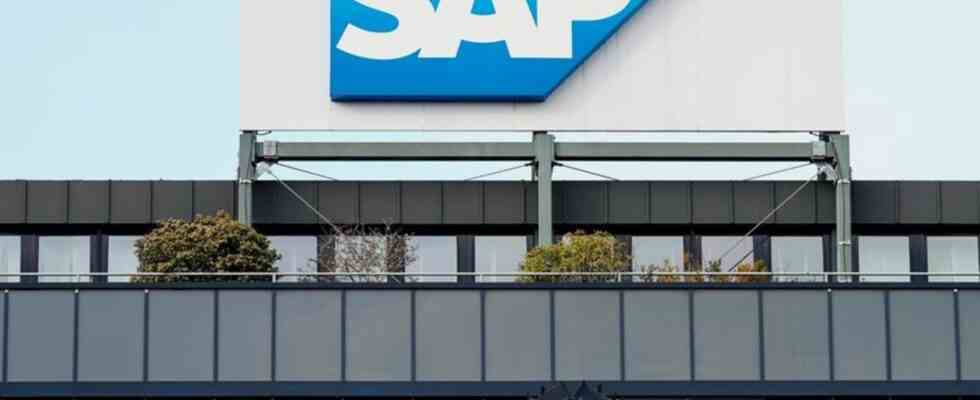software company
SAP plans job cuts and sale of Qualtrics
With the job cuts, SAP wants to concentrate on growth in the traditional area with software for corporate management. photo
© Uwe Anspach/dpa
Software giant SAP joins the latest wave of layoffs in the global tech industry with thousands of job cuts. The company wants to noticeably reduce annual costs.
In view of the planned turn towards more profit, Europe’s largest software manufacturer SAP wants to make itself leaner and also cut thousands of jobs. The Walldorf-based company also put its US market research subsidiary Qualtrics in the shop window on Thursday – a sale could increase profitability and allow more focus on the core business, according to CEO Christian Klein. The manager also wants to cut 3,000 jobs. This affects around 2.5 percent of all employees, in Germany there are around 200 jobs. The job cuts should enable further investments in the core business.
For more than two years now, Klein has been pushing ahead with the restructuring of the group. He wants to convert the core business with software licenses for corporate management into a cloud-based subscription model. However, the investments in the future are initially at the expense of the result. Transforming a company of this size is never easy, Klein said. But the group has now reached an important turning point and shown “that SAP is now a real cloud company”.
Annual costs are expected to drop by 350 million
This year, after two lean years, noticeably more profits are to be made from day-to-day business. CFO Luka Mucic expects a currency-adjusted increase in earnings before interest and taxes adjusted for special effects by 10 to 13 percent. Last year, the operating result fell by two percent to 8.03 billion euros. With the cloud software, SAP wants to make currency-adjusted sales between 22 and 25 percent more in the current year, CEO Klein expects an increase of between 6 and 8 percent in total product sales.
CFO Mucic said that the job cuts this year should not contribute much to the turn in the operating result for the better that has been in prospect for a long time. The step should reduce annual costs by 350 million euros. This will be particularly important after 2024. Layoffs are also likely to be part of the job cuts. Sometimes you have to make decisions that go beyond the current year, said Klein. In order to ensure that SAP does not fall behind in areas that are important for the future, management made this “difficult decision”.
The job cuts described by the company as “targeted restructuring” will therefore not include any early retirement regulations, which should have objectively applied to everyone and also be offered to all employees. Instead, SAP wants to cut back where it is currently having less success in customer discussions – in the area of customer management software (CRM), for example, which is to be more closely integrated into industry solutions for different sectors of the economy. Klein said that money should be invested in the software company’s core area – here, in enterprise management software (ERP), he wants to expand SAP’s position and increase its market share, especially in the cloud.
Annual sales increased by a total of eleven percent in 2022
The US market researcher Qualtrics, bought in 2018 by Klein’s predecessor Bill McDermott for 8 billion US dollars, is apparently no longer part of Klein’s considerations for the future of the Walldorf-based company. Qualtrics is currently valued at less than $7 billion. According to Mucic, SAP still holds a nominal 71 percent of the shares, but due to the expensive agreements for stock-based remuneration in the company, it is only 61 percent diluted by new shares.
Last year, SAP made up some lost ground in actual business. Annual sales rose by a total of 11 percent to 30.9 billion euros, also thanks to the upturn in business with cloud software for use over the network. Without the weak euro, however, revenue would only have risen by 5 percent. The bottom line is that net profit fell by a good two-thirds to 1.71 billion euros, mainly because risk participation in start-ups did not contribute as much valuation income as in the previous year.

